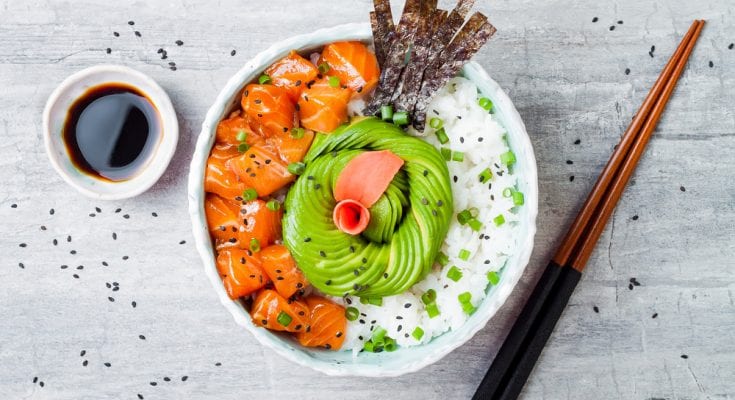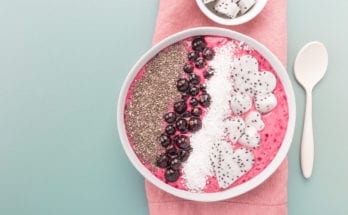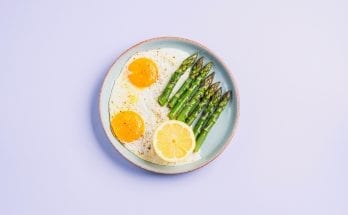Poke Bowls
Poké (rhymes with “okay”) consists of raw fish on a bed of rice, topped with vegetables and seaweed – like an undone sushi roll. It’s a Hawaiian dish that, much like a rice bowl, can be personalized to incorporate your favorite ingredients. Just make sure you stick to the traditional preparation which is high in protein and low in calories. Fish has fatty acids, like Omega-3, which makes it a heart-healthy food. It’s your key ingredient, so you want to lookout for the freshest fish possible. Choose a local, sustainable vendor with fish that aren’t farmed.
When choosing your vegetables, you’ll make your bowl more nutritional if you “eat the rainbow.” Buy different colored vegetables, like sprouts, cabbage and carrots.
Ancient Grains
We’ve always enjoyed ancient grains, like rice and millet but these days we’re sampling more of what the Eastern world has to offer. These grains are usually gluten-free and can perfectly substitute grains that are more common in our diet. They are rich in dietary fiber, provide plant protein and individually offer a variety of nutritional benefits. Here are four ancient grains that are among today’s hottest food trends. We especially like them because they’re packed with nutritional value and are extremely versatile.
- Amaranth: This grain has nine grams of protein in one cup! It also has potassium, calcium and iron. Amaranth can be prepared like oatmeal.
- Freekeh: Just like amaranth, freekeh is a good source of protein (not as high). It also has calcium and zinc and can treat common digestive issues. It’s a perfect substitute for rice when you want to try something new.
- Millet: This grain is high in magnesium, which makes it a heart-healthy ingredient in any meal. When you’re craving couscous, reach for your millet.
- Kamut: This grain is high in fiber and protein, but can also reduce gut inflammation associated with irritable bowel syndrome. It’s a hearty addition to a vegetarian soup.
Edible Flowers
When you want to add something new to your culinary routine, look no further than your flower garden. You may see flower petals acting as a beautiful garnish on desserts, but its uses are more versatile than that. You can add flowers to butter, in sandwiches and tossed in a salad. There are many edible flowers to choose from and they each come with their own health benefits, but we like the following for their beauty and versatility:
- Dandelion: high in vitamin A and C
- Elderberry: can aid in digestion
- Goldenrod: helps relieve allergies
- Violets: treats respiratory ailments
- Honeysuckle: soothes the colon
Hemp, Chia and Flax Seeds
These three seeds have significantly grown in popularity over the years, particularly in plant-based diets. They’re super foods with major nutritional value, so this comes as no surprise. You can sprinkle them over cereal or bake them into your favorite recipes.
- Hemp Seeds: Chia may be the super seed among foodies, but did you know that hemp offers the most diverse nutrients of all three? It comes with omega-3 fatty acids, protein, fiber and amino acids. The latter makes it a great protein for vegans and vegetarians.
- Chia Seeds: Most of us don’t receive our daily dose of fiber, which is why chia seeds should be a part of everyone’s diet. With five grams of fiber per tablespoon, why not add some into your oatmeal or smoothie.
- Flax Seeds: This seed is also pretty high in dietary fiber with four grams per tablespoon. It also has omega-3 and lignans (polyphenols) which can help lower cholesterol.




